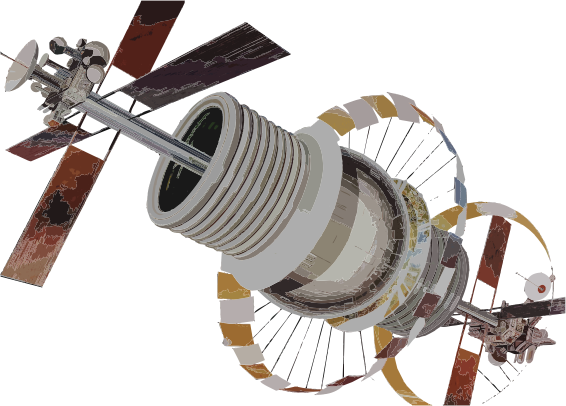The Society began more direct pursuit of its goal in the mid-20-aughts, when it led several grass-roots space advocacy organizations in fostering development of commercial infrastructure in Earth orbit. It first researched profit potential for launch vehicles providing lower costs per pound to orbit. Then the Society assured that new launch vehicles would have customers, by providing venture capital for companies developing new products that used the space environment or required launch services. The Foundation Society funded lobbying in the U.S. Congress that resulted in favorable tax and equity-protection laws for companies investing large percentages of their assets in perceived high-risk ventures with long-range return. Then, it further assured a strong customer base for commercial launch services, with long-range commitments for government-sponsored scientific and exploratory space missions, and removed the U.S. government from the businesses of launch vehicle operation and space hardware fabrication. The results of these efforts encouraged American corporate interest in commercial development of launch vehicles and space infrastructure, which in turn inspired competitive interest in other parts of the world.
The Society outlined a master plan in the early-to-mid-2010’s for establishing nine Space Settlements: in Earth orbit, on Earth’s moon, in Mars orbit, on the Martian surface, and in the asteroid belt. It amassed members and wealth to assure sufficient resources to begin implementing the plan as soon as economic reality permitted. The Foundation Society defined the primary condition for initiating this plan as a reduction of LEO launch costs to $1000 per pound.
In 2014, it became clear that global warming is a natural and inevitable solar- and geology-dependent process. The Foundation Society offered to mitigate solar effects with construction of a solar shield at the Earth-Sun L1 libration point. A United Nations Trade Study concluded that solar shield construction costs would be less than the adverse global economic impact of returning to the geological norm of a glacier-free Earth. As a result, the Society voted to waive the initial condition and begin implementation of the space settlement master plan, due to lucrative arrangements made with the United Nations to reduce the threat of devastating global warming on Earth. A complex deal involved venture capitalists who financed the project, with promise of profitable reimbursement from United Nations members if the project worked, or partial reimbursement from the assets of individual Foundation Society members if it failed. In return, the Foundation Society built a huge (Texas-size) solar shield at the Earth-Sun L1 libration point; when completed in 2033, it reduced insolation on the Earth by 0.5% and eliminated any future threat of global warming. The plan included construction of the Foundation Society’s first space settlement, Alexandriat, as a manufacturing base, which it now operates as its own.
Construction of Alexandriat began in orbit around the Earth-Moon L5 libration point in 2018. Within five years, enough of it was completed to enable a thousand residents to move in, and then to begin construction of the solar shield. The settlement was finished and provided homes for its full population of 10,000 people by the end of 2028.
The advances in space transportation and construction techniques inspired by the urgency of the solar shield project caused some predictable related benefits.
On the fringes of Alexandriat’s primary mission, some Foundation Society members developed products that can be used for other applications in space. Some satellite components can be built and installed in space less expensively than if they were designed, analyzed, and tested to withstand the rigors of launch. Relatively fragile components (e.g., antennas, lenses, sensors, and solar panels) are particularly amenable to in-space manufacture.
In addition to meeting its primary mission, however, Alexandriat and the people living there are changing humans’ relationship to space. In part due to the solar shield, space is coming to be regarded as a source of assets essential to quality of life. People living in space are figuring out how to make things in microgravity and perfect vacuum that were difficult or impossible to make on Earth’s surface. The most profitable of these newly feasible products appear to be nanobots, microscopic robots programmed to perform tasks at the molecular level. Although envisioned for decades, they were impractical on a large scale until an Alexandriat lab figured out how to grow them in space. Nanobot designs and uses are not the universal fabrication technique envisioned by some late-20th-century science fiction writers. They originally were put to work modifying molecules to form an airtight seal on interior surfaces of superadobe structures; place solar cell materials on SPS array surfaces, add filtering materials to windows of spacecraft, and assemble the interiors of circuit components. With experience, more uses are being developed. Nanobots are emerging as a major export category, spurring increased production of space-based manufacturing facilities and vehicles to get them to dirtside customers.
Although the Foundation Society has developed sufficient financial reserves to invest in expensive projects like Space Settlements, the organization’s goal is to build as many as possible, and therefore to develop an efficient construction infrastructure. To this end, it expects that lunar and other extraterrestrial materials will be used extensively in construction of its settlements.
